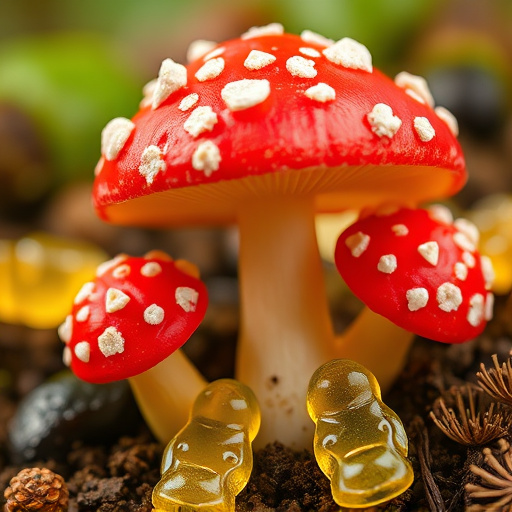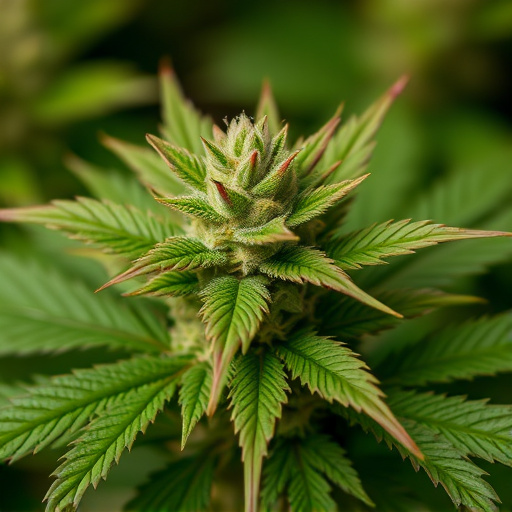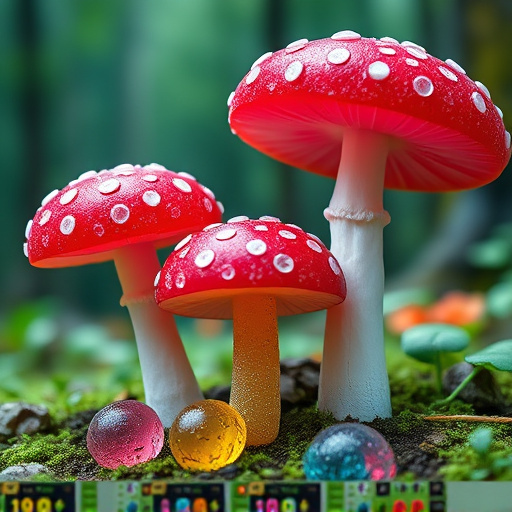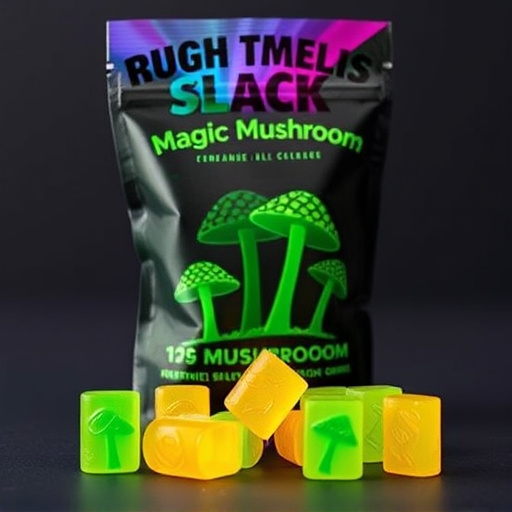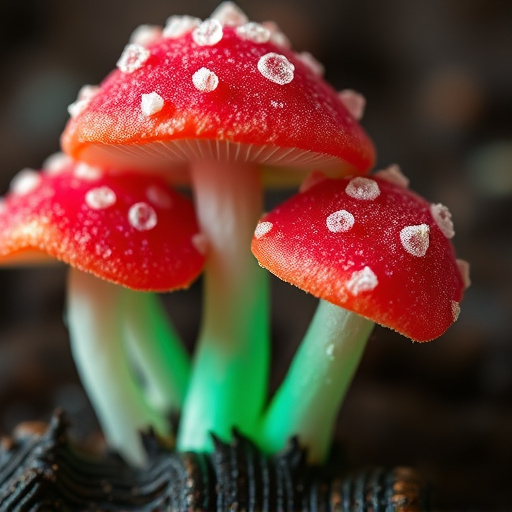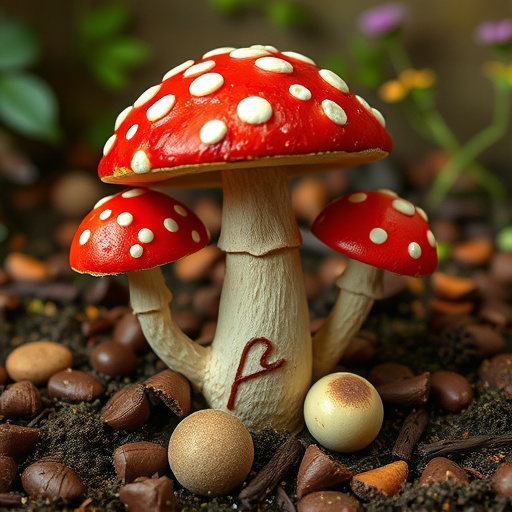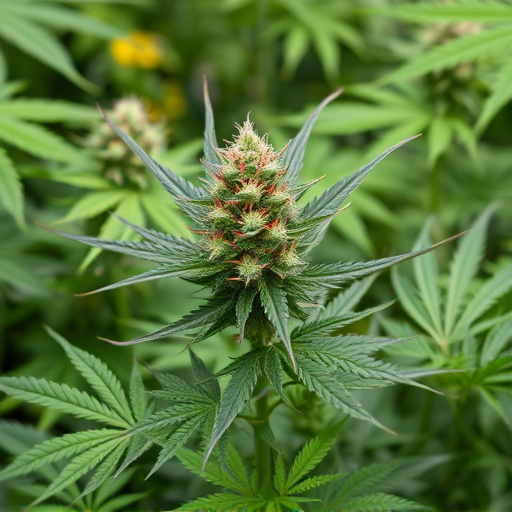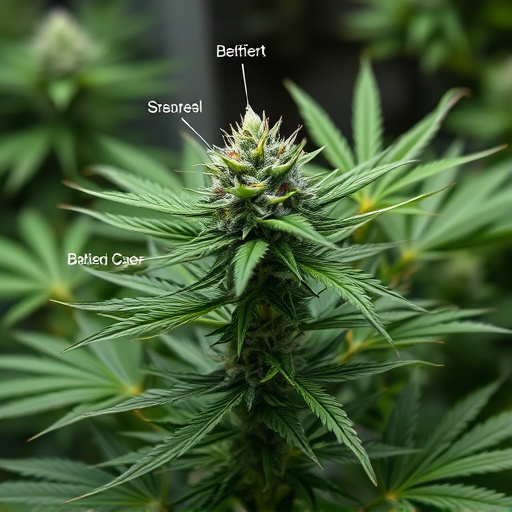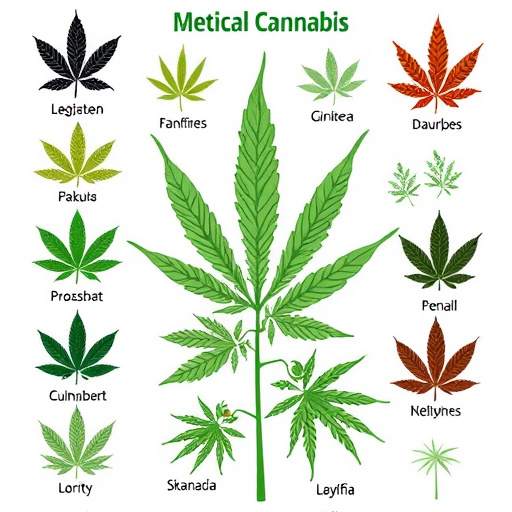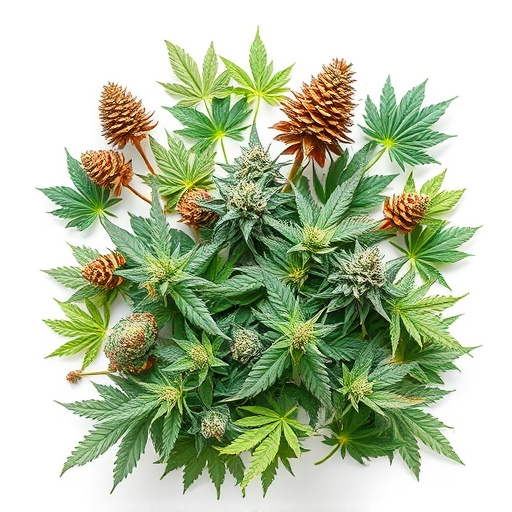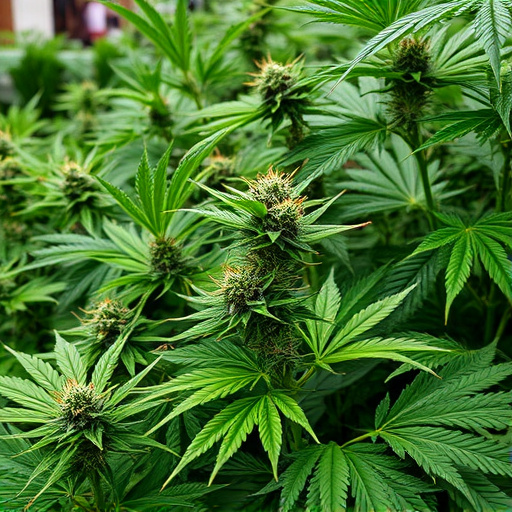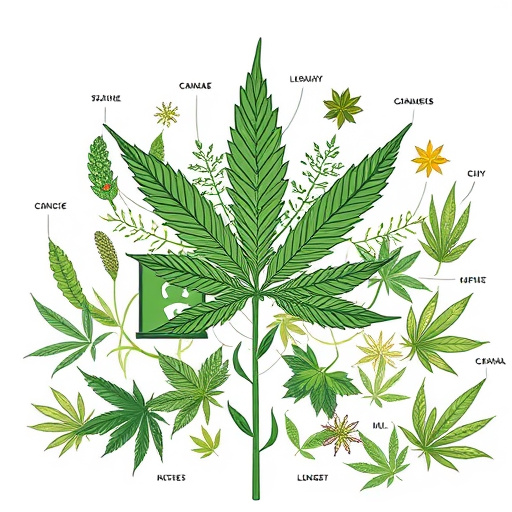Cannabis contains THC and CBD, which interact with the body's endocannabinoid system. THC causes a "high," while non-psychoactive CBD offers potential medicinal benefits like anxiety relief, anti-inflammation, and pain reduction. Dosage varies among individuals based on biological factors. High-CBD strains are for anxiety without psychoactivity, while high-THC strains treat pain and inflammation. Start with low THC doses (5-10mg orally) or CBD (1-2mg), track reactions, and adjust incrementally to find the best therapeutic effect from the various strains of medical cannabis.
Unsure about the right THC and CBD dosage? This comprehensive guide will help you navigate the world of medical cannabis. Discover how understanding key compounds like THC and CBD, along with factors like individual variability and strain selection, is crucial for finding your ideal dose. Learn a step-by-step approach to safely start low and monitor effects, ensuring a personalized and effective treatment experience with various strains of medical cannabis.
- Understanding THC and CBD: The Key Compounds in Medical Cannabis
- Factors Influencing the Optimal Dosage: Individual Variability and Strain Selection
- Starting Low and Monitoring Effects: A Step-by-Step Guide to Finding Your Ideal Dosage
Understanding THC and CBD: The Key Compounds in Medical Cannabis
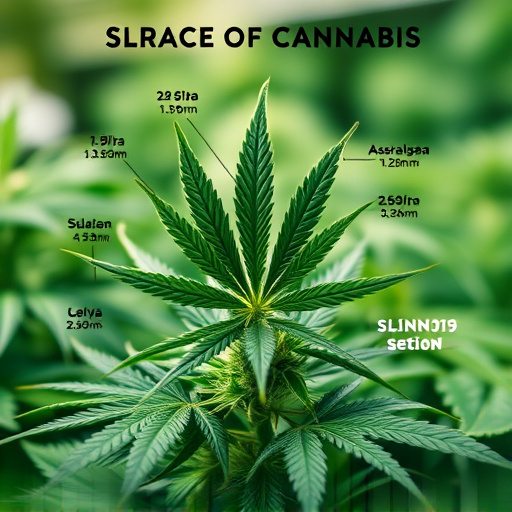
Cannabis contains a complex mixture of chemical compounds, but two that have garnered significant attention for their potential therapeutic benefits are THC (tetrahydrocannabinol) and CBD (cannabidiol). These compounds belong to a class of molecules known as cannabinoids, which interact with the body’s endocannabinoid system. This system plays a crucial role in maintaining balance and homeostasis, influencing various physiological processes including pain perception, mood, memory, and appetite.
THC is primarily known for its psychoactive effects, responsible for the “high” associated with cannabis use. It binds to specific receptors in the brain, leading to altered sensory perception and heightened emotional experiences. On the other hand, CBD doesn’t produce a intoxicating effect and has gained popularity for its potential medicinal properties. Studies suggest it may help alleviate anxiety, inflammation, and certain types of pain without altering cognitive function. Understanding the unique effects and interactions of THC and CBD is essential when navigating different strains of medical cannabis to find the right dosage for individual needs.
Factors Influencing the Optimal Dosage: Individual Variability and Strain Selection
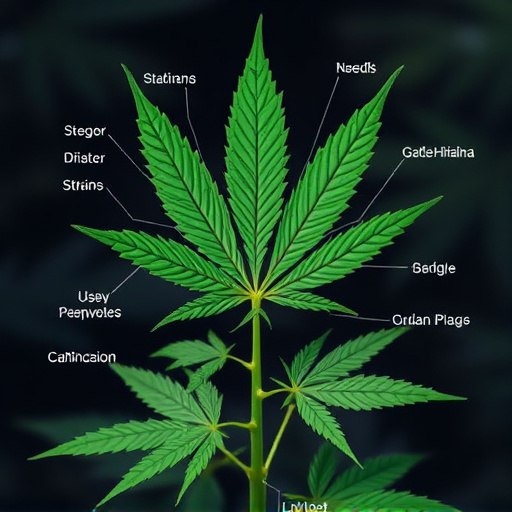
The optimal dosage of THC (tetrahydrocannabinol) and CBD (cannabidiol) is highly influenced by individual variability, a crucial aspect often overlooked in discussions about cannabis consumption. Every person metabolizes these compounds differently due to various biological factors. Age, weight, overall health, metabolism, tolerance, and even gender can play significant roles in determining the effective dose. For instance, younger individuals may require lower doses to avoid excessive side effects, while older adults might experience different effects due to age-related physiological changes.
Additionally, the selection of strains of medical cannabis is paramount when finding the right dosage. Different strains have varying levels of THC and CBD, offering a range of therapeutic benefits. High-CBD strains are popular for their potential anxiety and seizure relief without psychotropic effects, whereas balanced or high-THC strains may be preferred for managing pain and inflammation. The specific cannabinoid profile of each strain significantly impacts the desired effects and dosage required to achieve them. Therefore, understanding both individual variability and strain characteristics is essential for navigating the complex world of cannabis dosing.
Starting Low and Monitoring Effects: A Step-by-Step Guide to Finding Your Ideal Dosage
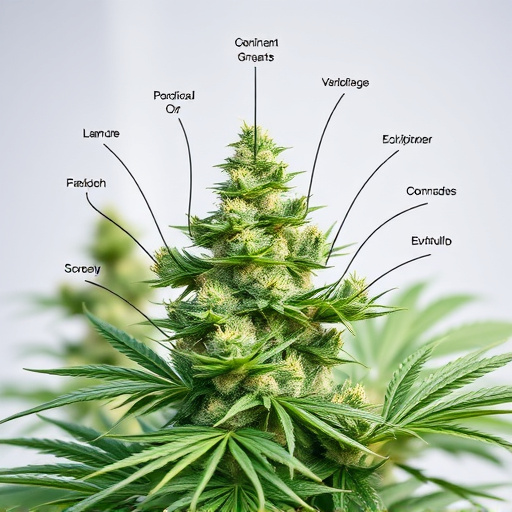
When exploring the world of medical cannabis, finding the right THC and CBD dosage is crucial for an optimal experience. A common and effective approach is to start low and gradually increase until desired effects are achieved. This step-by-step guide provides a framework for navigating this process safely and effectively.
Begin by considering small doses, typically starting at 5-10 milligrams of THC for oral consumption or 1-2 milligrams through other methods. Monitor your body’s reaction closely over the next few hours. Pay attention to any changes in mood, energy levels, appetite, and any potential side effects. Keep a log to track these observations, as it will help you identify patterns and understand how your body responds to different dosages. Based on this initial data, adjust accordingly, increasing by small increments until desired results are noticed. This method ensures a personalized approach, allowing you to find the ideal balance among various strains of medical cannabis.
Finding the right THC and CBD dosage is a personalized journey. By understanding the effects of these compounds, considering individual variability, and starting low, you can safely navigate the world of medical cannabis. Different strains offer unique profiles, so exploring various strains is key to discovering what works best for your needs. Remember, patience and careful monitoring are essential steps in finding your ideal dosage, ensuring a positive and effective experience with strains of medical cannabis.
